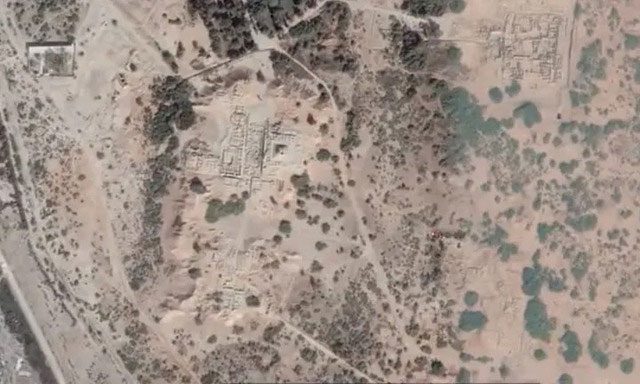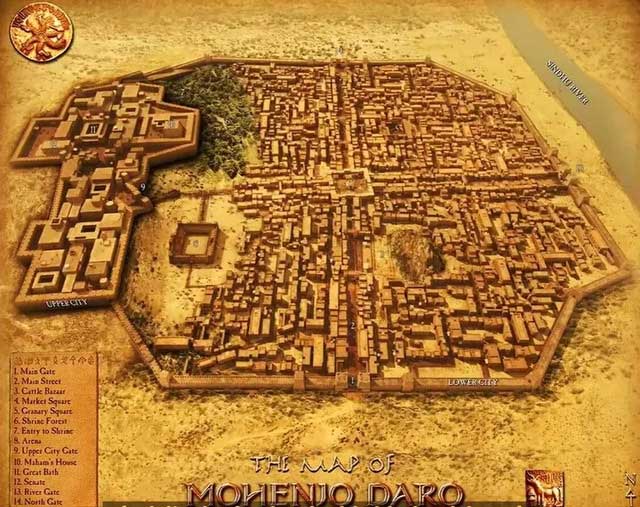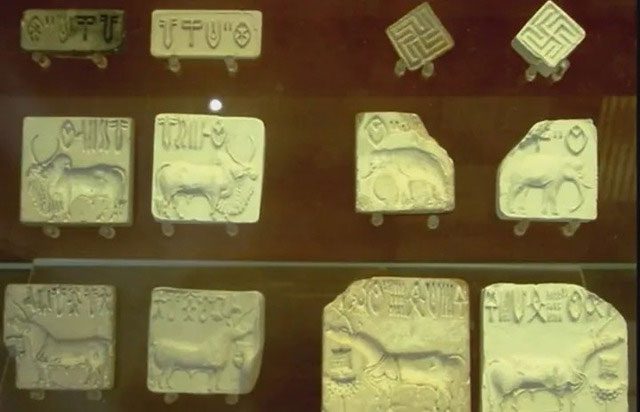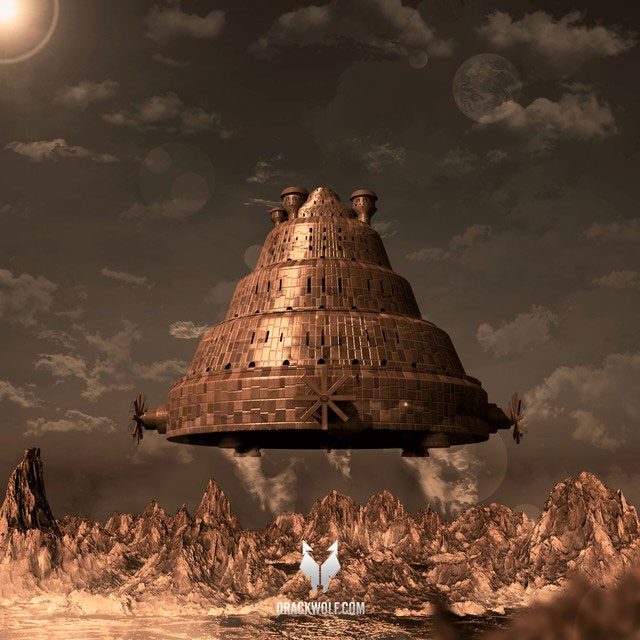The Indus Valley Civilization is one of the oldest civilizations in human history, and its origins and decline remain shrouded in numerous mysteries to this day.
As one of the key cities of the Indus Valley Civilization, the ancient city of Mohenjo-daro is located in Sindh province, present-day Pakistan, and is estimated to have been built around 4,600 years ago. This ancient city features well-planned streets, a drainage system, granaries, public baths, temples, and palaces. It is estimated that about 40,000 inhabitants engaged in agriculture, crafts, and trade once lived here. Archaeologists have also discovered hieroglyphs that remain undeciphered by modern science, as well as many pottery, jewelry, and exquisite seals found at the site.

Mohenjo-daro is a city of the Indus Valley Civilization.
Mohenjo-daro is a city of the Indus Valley Civilization – renowned like the ancient civilizations of Egypt, Mesopotamia, and Crete. The architectural style and cultural characteristics of the city reflect connections and exchanges with other regions. The seals excavated feature numerous animal motifs, including lions, elephants, rhinoceroses, and camels from Africa and Western Asia, indicating that there was trade and exchange between the local inhabitants and other parts of the world.
Mohenjo-daro was abandoned around 1900 BCE. The specific cause remains unclear, but one hypothesis suggests it was destroyed by an ancient nuclear war. This hypothesis isn’t entirely based on imagination, as there are several pieces of supporting evidence:
- Human remains found in the ruins. However, their postures and positions indicate they were instantly killed by something, with no signs of struggle or attempts to escape. It is suspected that the city suffered from a massive explosion that instantly incinerated people at high temperatures.
- Near the ancient city is a place known as “The Glass City”, where soil and rock have been melted into glass, a phenomenon reminiscent of the extreme temperatures generated at modern nuclear explosion sites that turn sand and rock into glass.
- Additionally, there is an area with a radius of about 10 km in the Libyan desert, where sand has also melted into glass. A plausible hypothesis is that a nuclear explosion also occurred there, possibly caused by enemies of Mohenjo-daro.

Mohenjo-daro was abandoned around 1900 BCE.
There are two epics in ancient India, “Mahabharata” and “Ramayana.” These texts were likely written around 2,500 years ago. They recount a war that took place around 10,000 BCE, but the scenes they describe are extraordinarily advanced for that time.
For example, they mention weapons that seem far beyond the era such as “Indra’s Arrow” and Vimana, weapons so powerful they could shoot fireballs from the sky, illuminating the entire sky, destroying cities and armies, even altering the climate.
Therefore, many believe that the weapons described in these epics are evidence of ancient nuclear wars or interplanetary conflicts caused by technologically advanced extraterrestrial beings.

The excavated seals feature numerous animal motifs, including lions, elephants, and rhinoceroses…
The hypothesis of ancient nuclear wars is intriguing, but in reality, there is no compelling scientific evidence. There are many issues and gaps in this hypothesis:
- The remains of the ancient city of Mohenjo-daro do not show many ruins, with inconsistent dating; some belong to the Indus Valley Civilization, while others are from later periods. There is no clear evidence that the deaths were caused by an explosion, and it is possible that the victims died from disease or famine.
- No traces of nuclear radiation have been found in “The Glass City” near Mohenjo-daro, nor have any explosion epicenters or craters formed after the supposed explosion been discovered. Glass can form naturally due to volcanic activity, meteorite impacts, or lightning. Only natural phenomena capable of producing high temperatures can melt sand and rock.
- The weapons described in the two epics of ancient India may be the imagination and exaggeration of ancient people regarding natural phenomena, or they could have been supplemented and modified by later generations. The images and functions of these weapons are also inconsistent; some are mythological artifacts, others historical artifacts, and without direct and tangible evidence, it is indeed very difficult to convince people.

The disappearance of the ancient city of Mohenjo-daro remains a mystery.
Regardless of all this, the ancient city of Mohenjo-daro remains a compelling and mysterious relic of ancient civilization; its disappearance could have many reasons, and a catastrophic nuclear war may only be a “reasonable” speculation of modern humanity. People should continue to maintain a scientific perspective to examine and interpret its history and culture, rather than blindly believing in certain conjectures and conspiracy theories.


















































